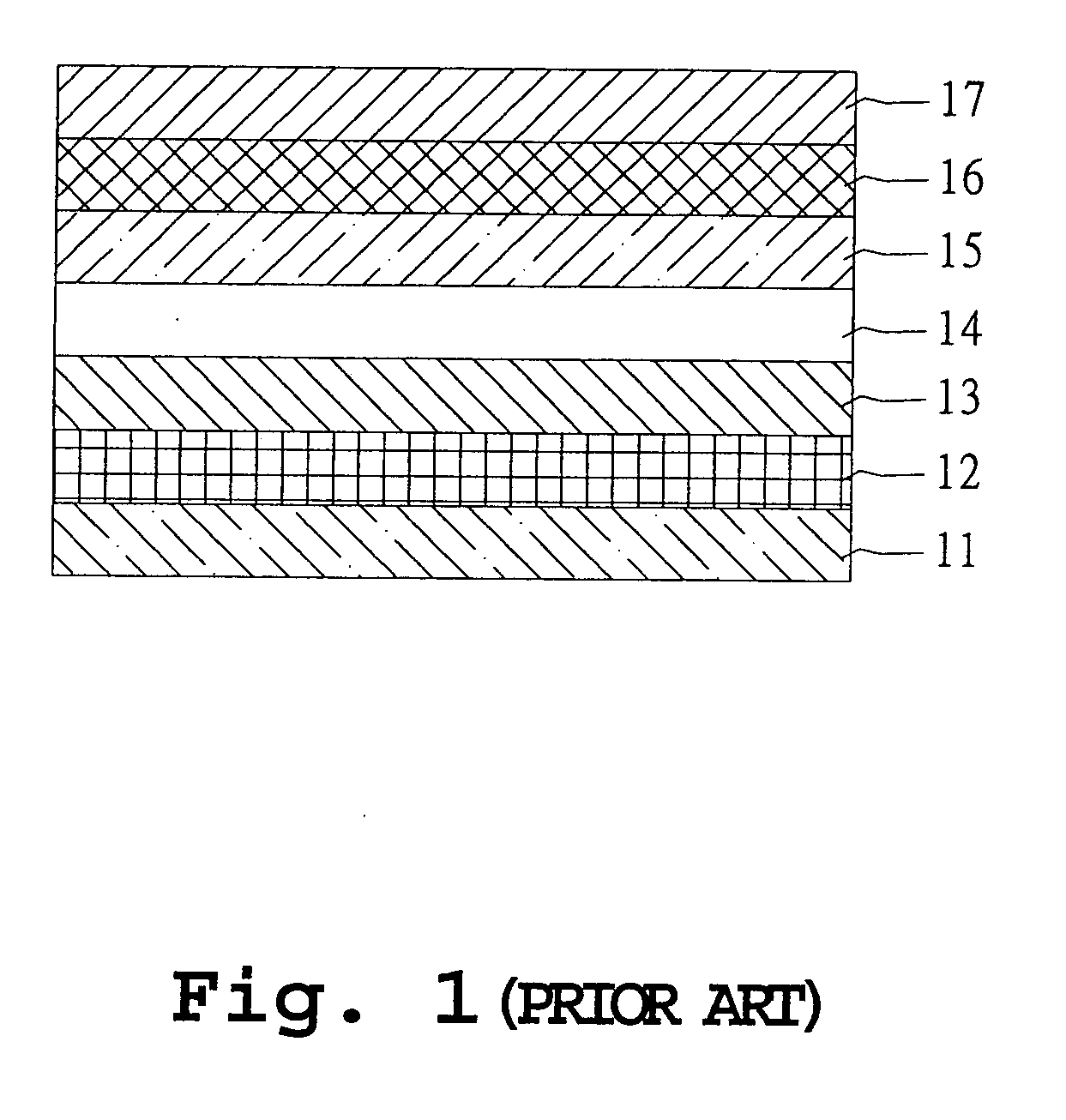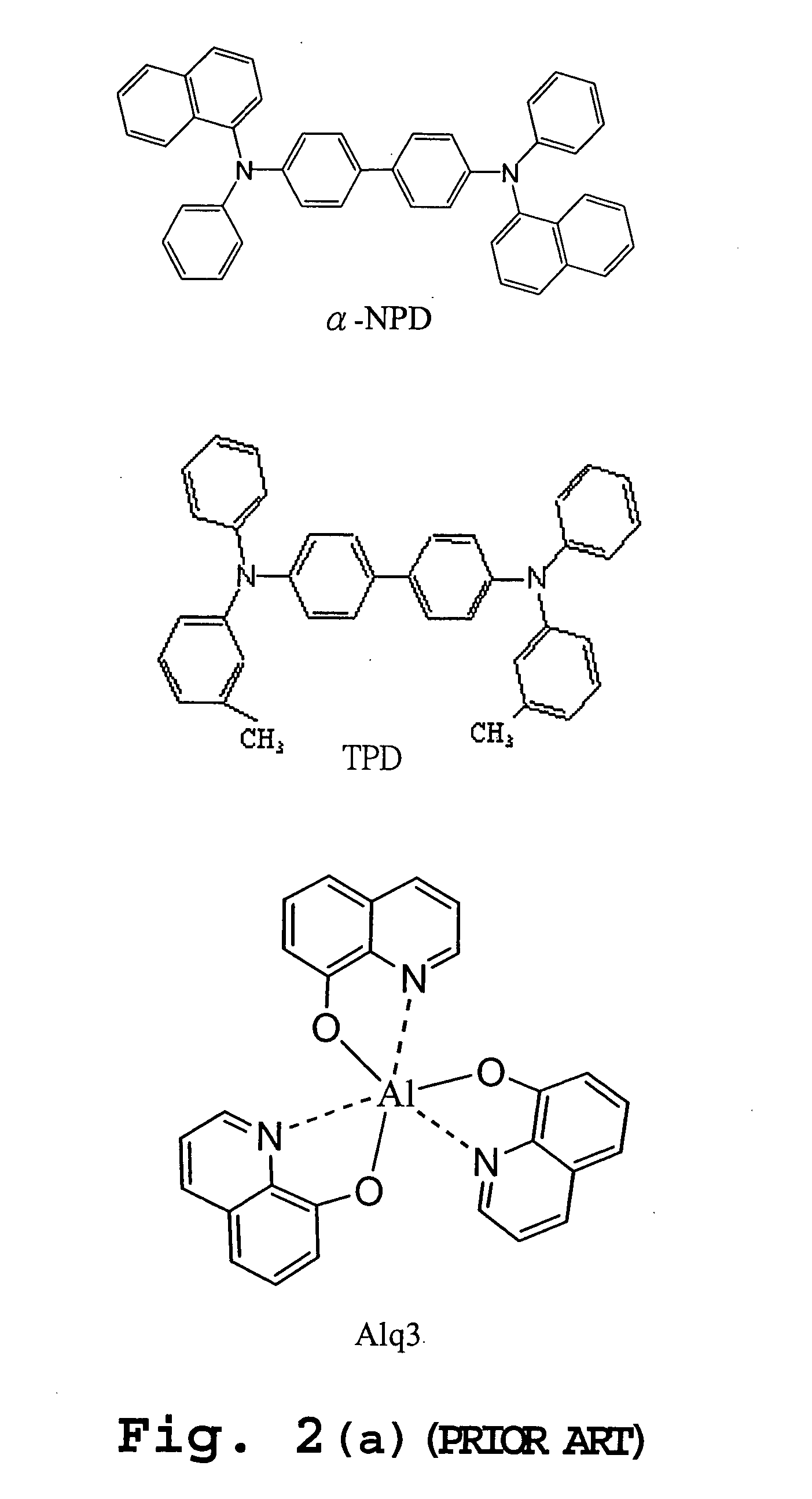Organic light emitting diode
a light-emitting diode and organic technology, applied in the direction of discharge tube/lamp details, organic semiconductor devices, discharge tubes luminescnet screens, etc., can solve the problems of difficult control of sputtering ito or other transparent metal oxide conductors on the organic layer, limited emission area, and easy damage to the layer, etc., to achieve better manufacturing processes, high optical transmission, and high refraction index
- Summary
- Abstract
- Description
- Claims
- Application Information
AI Technical Summary
Benefits of technology
Problems solved by technology
Method used
Image
Examples
Embodiment Construction
[0033] The present invention will now be described more specifically with reference to the following embodiments. It is to be noted that the following descriptions of preferred embodiments of this invention are presented herein for purpose of illustration and description only; it is not intended to be exhaustive or to be limited to the precise form disclosed.
[0034] Please refer to FIG. 3, which is a diagram showing the OLED having the transparent cathode according to a preferred embodiment of the present invention. The OLED includes the substrate 31, the anode 32, the organic layer 33 and the transparent cathode 34. The anode 32 is deposited on the substrate 31. The organic layer 33 is deposited on the anode 32. The transparent cathode 34 is deposited on the organic layer 33. The anode 32 is made of the metal layer 321 and the metal oxide, e.g. AgOx, layer 322 having a thickness ranged between 0.1 and 50 nm deposited on the metal layer 321. Take Ag2O for example, because the Ag2O h...
PUM
 Login to View More
Login to View More Abstract
Description
Claims
Application Information
 Login to View More
Login to View More - R&D
- Intellectual Property
- Life Sciences
- Materials
- Tech Scout
- Unparalleled Data Quality
- Higher Quality Content
- 60% Fewer Hallucinations
Browse by: Latest US Patents, China's latest patents, Technical Efficacy Thesaurus, Application Domain, Technology Topic, Popular Technical Reports.
© 2025 PatSnap. All rights reserved.Legal|Privacy policy|Modern Slavery Act Transparency Statement|Sitemap|About US| Contact US: help@patsnap.com



